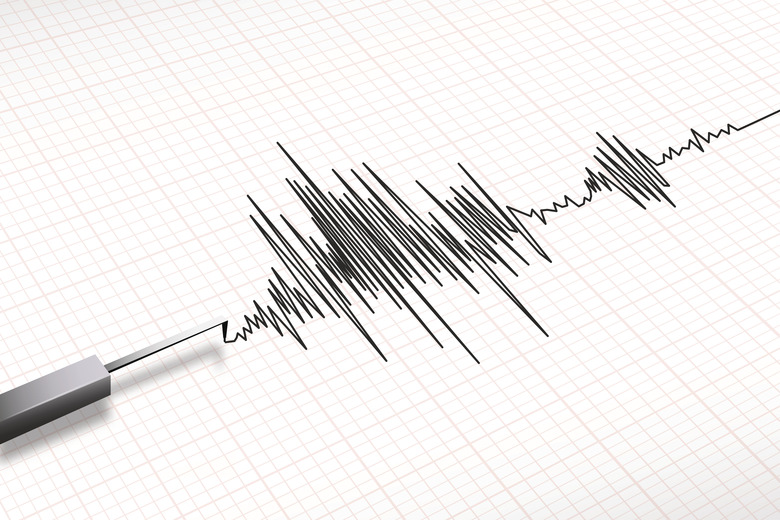What Are Some Differences Between P & S Waves?
Sudden disturbances of the earth release waves of energy called seismic waves. Earthquakes, explosions, even large trucks generate seismic waves. A seismograph measures seismic waves to determine the level of intensity of these disturbances. Natural and artificial disturbances generate several different types of seismic waves, such as the P, or primary wave, and the S, or secondary wave. The differences between them allow scientists to measure the strength and location of the disturbance.
TL;DR (Too Long; Didn't Read)
The major differences between P waves and S waves include wave speeds, wave types, travel capabilities, and wave sizes. Primary waves travel faster, move in a push-pull pattern, travel through solids, liquids and gases, and cause less damage due to their smaller size. Secondary waves travel slower, move in an up-and-down pattern, travel only through solids, and cause more damage due to their greater size.
Wave Speeds
Wave Speeds
P waves travel faster than S waves, and are the first waves recorded by a seismograph in the event of a disturbance. P waves travel at speeds between 1 and 14 km per second, while S waves travel significantly slower, between 1 and 8 km per second. The S waves are the second wave to reach a seismic station measuring a disturbance. The difference in arrival times helps geologists determine the location of the earthquake.
Type of Wave
Type of Wave
Primary waves are made up of compression waves, also known as push-pull waves. The individual waves, therefore, push against one another, causing a constant parallel, straight motion. S waves are transverse waves, which means they vibrate up and down, perpendicular to the motion of the wave as they travel. In an S wave, particles travel up and down and the wave moves forward, like the image of a sine wave.
Travel Capability
Travel Capability
Because of their wave movement, P waves travel through any kind of material, whether it is a solid, liquid or gas. On the other hand, S waves only move through solids and are stopped by liquids and gases. For this reason, S waves are sometimes referred to as shear waves because they are unable to alter the volume of the material that they pass through. This also accounts why fewer S waves are recorded than P waves. Geologist used this difference to determine that the Earth's outer core is liquid, and continue to use this difference to map the internal structure of the Earth.
Wave Sizes
Wave Sizes
S waves are generally larger than P waves, causing much of the damage in an earthquake. Since the particles in an S wave move up and down, they move the earth around them with greater force, shaking the surface of the Earth. P waves, though easier to record, are significantly smaller and do not cause as much damage because they compress particles in only one direction.
Cite This Article
MLA
Godard, Robert. "What Are Some Differences Between P & S Waves?" sciencing.com, https://www.sciencing.com/differences-between-waves-8410417/. 23 April 2018.
APA
Godard, Robert. (2018, April 23). What Are Some Differences Between P & S Waves?. sciencing.com. Retrieved from https://www.sciencing.com/differences-between-waves-8410417/
Chicago
Godard, Robert. What Are Some Differences Between P & S Waves? last modified March 24, 2022. https://www.sciencing.com/differences-between-waves-8410417/
